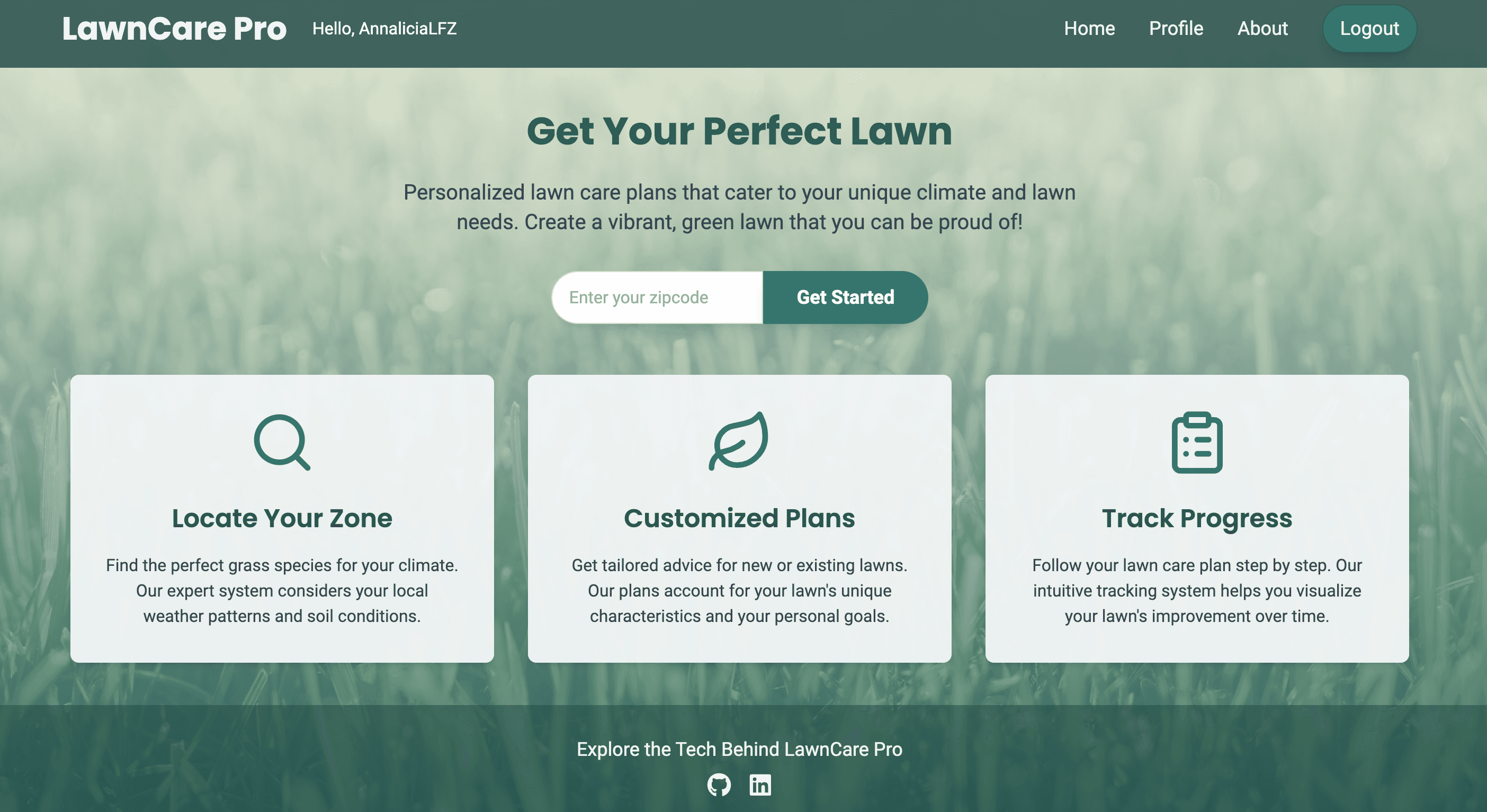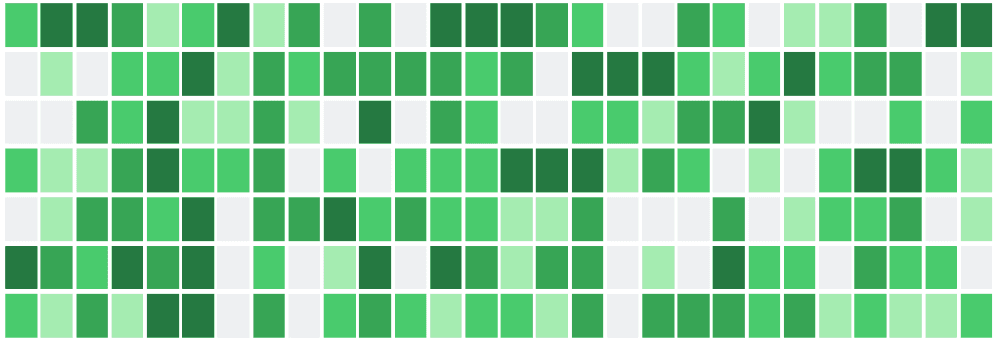Understanding UX Vs UI to Craft an Exceptional User Experience
UI focuses on creating an attractive and user-friendly interface, while UX is dedicated to delivering a satisfying and seamless overall user experience. From websites to mobile apps, User Interface (UI) and User Experience (UX) play a huge role in shaping how we use digital products. Let’s take a deep dive into the world of UX and UI design, uncovering their true nature, differences, and pivotal importance in the world of web design.
We will also explore the history of these design disciplines, drawing inspiration from real-world case studies that illustrate exemplary UI and UX strategies. Lastly, we’ll examine the emerging trends that are reshaping these fields today.
Let’s understand UI vs UX and how they craft exceptional user experiences.
Unveiling User Experience (UX)
User Experience, commonly referred to as UX, encompasses the overall interaction a user has with a product, including how they feel about it.
UX designers are responsible for understanding user behaviors, needs, and motivations through extensive research and testing. They use this knowledge to design intuitive and user-centric interfaces that provide a seamless and enjoyable experience.
UX encompasses all aspects of a user’s interaction with a digital product, from the initial discovery and onboarding process to the usability, accessibility, and satisfaction with the product. UX design aims to create meaningful and delightful experiences for users.
The Role of UX Designers
UX designers are the champions of user satisfaction and the creators of a product’s overall experience. Their responsibilities are wide-ranging and crucial for delivering digital products that resonate with users including:
User Research: UX designers conduct extensive user research through methods like surveys, interviews, and usability testing. These efforts are aimed at gaining deep insights into user preferences, behaviors, pain points, and needs. User research helps UX designers make informed design decisions that cater to the target audience.
Information Architecture: One of the fundamental tasks of UX designers is to structure and organize the content and features of a digital product. This involves creating an intuitive information hierarchy that ensures logical navigation and findability. Effective information architecture is the backbone of a user-friendly experience.
Wireframing and Prototyping: UX designers use wireframing and prototyping to visually represent the user flow and functionality of the product. Wireframes are basic, static layouts that outline the skeletal structure of each screen, while prototypes are interactive models that allow for user testing. This process helps designers fine-tune the user experience before development.
Usability Testing: Usability testing is a core activity in UX design. Designers conduct tests where users interact with prototypes or the actual product, gathering feedback on its usability. This feedback is invaluable in identifying pain points, areas for improvement, and user preferences. Iterative improvements based on usability testing are central to UX design.
Accessibility: UX designers prioritize accessibility, ensuring that the digital product is usable by individuals with disabilities. This involves adhering to web accessibility standards, such as WCAG (Web Content Accessibility Guidelines). By making the product accessible, UX designers extend its usability to a broader audience, promoting inclusivity and compliance with legal requirements.
Collaboration: Collaboration is at the core of UX design. UX designers collaborate closely with UI designers, developers, and stakeholders to align the user experience with the visual design and technical implementation. This collaborative approach ensures that the product is not only visually appealing but also functional and user-centric.
The Evolution of UX Design
The concept of user experience has been present since the early days of design, but it gained prominence with the advent of digital products. The field of UX design has evolved significantly, driven by the recognition of the importance of user-centered design.
The term “user experience” was popularized by Don Norman, a cognitive scientist, and designer, in the 1990s. His work emphasized the significance of understanding user needs and emotions in design. As technology advanced and digital products proliferated, UX design became a distinct discipline, encompassing research, usability testing, and user-centered methodologies.
In recent years, the focus of UX design has expanded to consider the entire user journey, from pre-interaction to post-interaction experiences. It has also incorporated elements of behavioral psychology and emotional design to create more engaging and delightful user experiences.
Understanding User Interface (UI)
User Interface, commonly known as UI, encompasses all the visual and interactive elements that enable users to interact with a digital product, such as a website or application. It includes everything a user sees, touches, clicks, or interacts with on their screen. UI design is responsible for creating the look and feel of a digital product, ensuring that it is visually appealing, user-friendly, and easy to navigate.
UI designers are like digital architects who craft the layout, color schemes, typography, icons, buttons, and other visual elements to create an engaging and intuitive user interface. Their primary goal is to make the user’s interaction with the product as seamless and enjoyable as possible.
The Role of UI Designers
A UI designer plays an important role in digital design. They act as the architects of a digital product’s visual identity, crafting elements that are visually appealing and allow seamless user interaction.
Working collaboratively with UX designers, graphic designers, and developers, UI designers transform abstract concepts into tangible, visually appealing, and functional interfaces. Their responsibilities cover several key areas:
Visual Design: UI designers are responsible for establishing and maintaining a consistent visual identity for the product. This involves selecting color schemes, fonts, and imagery that not only align with the brand’s identity but also enhance user engagement. The colors chosen, for instance, should convey emotions and brand values effectively.
Layout and Structure: A crucial aspect of UI design is laying out each screen or page in a way that ensures a logical flow of information. UI designers carefully structure the placement of elements to facilitate easy navigation and create a visually pleasing hierarchy. This hierarchy guides users’ attention and helps them find information intuitively.
Icon and Button Design: UI designers are responsible for creating icons and buttons that are not only aesthetically pleasing but also intuitive in their purpose. These elements serve as visual cues, guiding users through the interface and encouraging interaction. Icons and buttons must be designed to be easily recognizable and accessible.
Responsive Design: UI designers must ensure that the user interface adapts seamlessly to various screen sizes and devices. This involves responsive design techniques that guarantee a consistent user experience across platforms. Whether a user accesses the product on a smartphone, tablet, or desktop, the UI should remain user-friendly and visually appealing.
Prototyping: To ensure that the UI design is not just visually striking but also functional, UI designers create interactive prototypes. These prototypes serve as a means to test different aspects of the design, including usability and user interactions. Through testing and refinement, UI designers can identify and rectify potential issues before development begins.
Collaboration: Effective collaboration is at the heart of successful UI design. UI designers work closely with UX designers to ensure that the visual elements harmonize with the overall user experience. Collaboration extends to web developers as well, as UI designers need to ensure that their design can be effectively implemented in a technically feasible manner.
The Evolution of UI Design
The history of UI design dates back to the early days of computing when user interfaces were text-based and operated through command lines. As technology advanced, graphical user interfaces (GUIs) emerged, introducing elements like icons, buttons, and windows. The release of the Macintosh by Apple in 1984 revolutionized UI design with its innovative use of icons and mouse-driven interactions.
Over the years, UI design has evolved significantly, influenced by design movements such as minimalism, flat design, and material design. The rise of mobile devices and touchscreens has further shaped UI design, emphasizing responsive and touch-friendly interfaces. Today, UI designers continue to explore new design trends, animations, and technologies to create cutting-edge user interfaces.
The Crucial Distinction: UX Vs UI
Understanding the difference between UI and UX is essential for creating effective and user-centric design. While these two disciplines are closely related, they have distinct focuses within the design process.
UX Vs UI: A Comparison
Let’s delve deeper into the distinctions between UI vs UX by expanding on their respective focuses, concerns, design elements, and goals:
User Experience (UX)
Focus: Overall user journey and satisfaction
Concerned with: How the user feels about the product
Design elements: Information architecture, user flow, usability
Goal: Create a seamless and enjoyable user experience
User Interface (UI)
Focus: Visual and interactive elements
Concerned with: How the product looks
Design elements: Color, typography, buttons, icons
Goal: Create an aesthetically pleasing and intuitive interface
In essence, while UI and UX are closely intertwined, they tackle different aspects of the design process. UI is all about crafting a visually appealing and user-friendly interface, making it visually pleasing and easy to interact with.
UX, on the other hand, is concerned with the holistic user journey, aiming to create an emotionally satisfying and frictionless experience. Together, these two disciplines combine to create exceptional digital products that not only look great but also provide users with a delightful and fulfilling experience.
UI and UX in Action
Let’s explore the differences between UI vs UX in the context of building a weather app.
UI Design:
A UI designer takes charge of the visual and interactive aspects of the weather application. Their responsibilities include:
Color Scheme Selection: The UI designer carefully selects a color scheme that not only aligns with the branding but also conveys the right emotional tone. For instance, they might choose bright colors for sunny weather and cool blues for rainy days.
Weather Icons: Designing weather icons is crucial to help users quickly understand the current weather conditions. The UI designer creates visually appealing and easily recognizable icons for various weather scenarios, like sun, clouds, raindrops, or snowflakes.
Button and Interaction Design: The designer creates buttons that users can click or tap to access specific features like viewing a detailed forecast or changing locations. These buttons are designed to be visually consistent with the overall theme of the app.
Layout and Information Hierarchy: The UI designer carefully arranges the app’s screens, ensuring that the layout is intuitive and easy to navigate. They establish an information hierarchy, making essential data, such as the current temperature and forecast, prominent and easily accessible.
UX Design:
The UX designer plays a different but equally crucial role in the development of the weather application:
User Research: The UX designer conducts thorough user research to gain insights into what features users expect and need in a weather application. This research may involve surveys, interviews, and observations to understand user preferences and pain points.
Data Accuracy and Timeliness: To provide a satisfying user experience, the UX designer ensures that the app delivers accurate and timely weather information. Users rely on this information for planning their day, so any inaccuracies can lead to frustration.
User-Friendly Interface: The UX designer focuses on creating a user-friendly interface. This includes designing an intuitive navigation system, ensuring that users can easily switch between locations, and providing clear instructions for accessing additional details.
Accessibility: Accessibility is a key consideration. The UX designer ensures that the app is accessible to users with disabilities, such as those who rely on screen readers. This might involve using alt text for images or providing voice-guided instructions.
The Synergy of UI and UX:
In this weather application example, the UI and UX designers collaborate to create a cohesive product. A beautiful UI with visually appealing icons and an easy-to-navigate layout catches users’ attention and makes the app engaging.
However, it’s the seamless UX design that truly enhances the user experience. Accurate weather data, user-friendly navigation, and accessibility features ensure that users can easily access the information they need without frustration. Users feel satisfied, informed, and confident in the app’s reliability.
This example illustrates that UI and UX design are not isolated efforts; they are deeply interconnected. A visually appealing UI without a functional UX may leave users frustrated due to inaccurate data or complex navigation.
Then again, a seamless UX with an unappealing UI may struggle to engage users initially. So, synergy between UI and UX designers is essential for creating a successful and user-centered digital product. Together, they ensure that the product not only looks great but also provides a delightful and satisfying user experience.
The Vital Role of UI and UX in Web Design
Why UI vs UX in web design? The significance of UI and UX in web design cannot be overstated. They are the foundation upon which user satisfaction, engagement, and success are built. Here’s why they matter:
First Impressions: UI creates the first impression of a website or application. A well-designed UI captures users’ attention, piques their interest, and encourages them to explore further.
Ease of Use: A user-friendly UX ensures that visitors can easily navigate and interact with the site. Intuitive navigation reduces friction and keeps users engaged.
Conversion Rate: An effective UI and UX design can significantly impact conversion rates. Clear calls to action (CTAs), well-placed buttons, and a smooth checkout process can lead to higher conversions.
Brand Loyalty: Consistent and positive experiences on a website or app foster brand loyalty. Users are more likely to return to a site they find easy to use and enjoyable.
Accessibility: Ensuring accessibility in UX design makes the web inclusive for all users, regardless of disabilities. This not only serves a moral purpose but also helps reach a broader audience.
Competitive Advantage: In a crowded digital landscape, superior UI and UX design can set a website or app apart from competitors. Users are more likely to choose and stay loyal to products that offer a better experience.
Apple: A Master of UI Design
Apple is renowned for its impeccable UI design. Its products, from the iPhone to the MacBook, are celebrated for their elegant and intuitive interfaces. Apple’s attention to detail, minimalist design, and focus on user-friendly interactions have set industry standards.
Airbnb: Elevating UX Design
Airbnb is a prime example of outstanding UX design. The platform provides a seamless and enjoyable experience for users searching for accommodations. Its user-centric approach, including extensive user testing, has contributed to Airbnb’s success and global user base.
UI and UX in Harmony: Google Maps
Google Maps exemplifies the harmonious integration of UI and UX design. The UI is clean and easy to navigate, while the UX ensures users can find locations, get directions, and explore maps effortlessly. This synergy has made Google Maps a go-to navigation app for millions.
Trends Shaping the Future of UI and UX
The world of UI and UX design is continually evolving. Several emerging trends are reshaping the design industry:
AI-Powered UX: Artificial intelligence is becoming a powerful tool throughout every industry, especially UX design. It personalizes content, predicts user behavior, and even automates tasks. Which provides tailored experiences for individual users. AI-driven chatbots and virtual assistants are becoming integral to many digital products.
Voice Interfaces: Voice-activated UI is quickly gaining popularity, with products like Amazon Echo and Google Home leading the way. Designing for voice interactions requires a different approach to user interfaces. Unlike traditional interfaces, where users engage through touch or clicks, voice interfaces rely on spoken commands.
Augmented Reality (AR) and Virtual Reality (VR): AR and VR technologies are introducing new design challenges and opportunities. UX designers are exploring immersive experiences such as gaming, education, and training simulations. In AR, designers overlay digital elements into the real world that enhance the users’ perception of reality.
Sustainable Design: With environmental consciousness on the rise, designers are increasingly turning their attention to sustainable design practices. This involves creating eco-friendly interfaces that reduce energy consumption and promote ethical design. Sustainable design goes beyond aesthetics; it prioritizes functionality and efficiency while minimizing waste.
Dark Mode: Dark mode UI designs have gained widespread popularity due to their aesthetic appeal and potential energy savings, particularly on OLED screens. This design trend offers users an alternative color scheme that replaces bright backgrounds with dark ones. It reduces eye strain in low-light conditions and potentially extends the battery life of devices with OLED displays.
Minimalism and Microinteractions: Minimalist UI designs with subtle microinteractions are gaining traction for their simplicity and user engagement. These subtle, unobtrusive animations or design elements provide feedback to users and enhance engagement. For example, a heart icon that fills with color when a user “likes” a post is a microinteraction that communicates an action’s success.
Ethical UX: Designers are increasingly attuned to the ethical implications of their work. Ethical UX involves considerations of user privacy, data security, inclusivity, and the broader societal impact of digital products. Designers must prioritize user consent, transparency in data collection, and protection against data breaches. Inclusivity in design involves ensuring that digital products cater to diverse audiences, regardless of abilities, backgrounds, or circumstances.
Staying up-to-date on these trends is important for designers striving to create exceptional digital experiences. These trends not only reflect the ever-changing technological setting but also respond to the evolving needs and expectations of users. With these trends in mind, designers can create immersive, sustainable, and user-centric digital experiences in the future.
Conclusion
The harmonious relationship between UI vs UX design is the cornerstone of creating exceptional digital products. UI, with its focus on aesthetics and interactive elements, crafts visually appealing and user-friendly interfaces that captivate users from the very first glance. On the other hand, UX, with its holistic approach, ensures that users not only navigate effortlessly but also revel in meaningful and enjoyable experiences.
As we’ve explored, UI and UX are not isolated disciplines but rather two sides of the same design coin. They complement each other, forming a powerful duo that determines the success and satisfaction of users in the digital realm. The evolution of these fields from their inception to the present day has been marked by groundbreaking innovations and a relentless pursuit of excellence.
Furthermore, as we glimpse into the future of UI and UX, we find ourselves in a landscape of exciting possibilities. Voice interfaces, augmented reality, AI-driven experiences, and ethical considerations are shaping the next frontier of design. Staying ahead of these emerging trends is crucial for designers aspiring to craft extraordinary digital experiences.
At LearningFuze, we recognize the pivotal role of UI and UX in today’s design landscape and its impact on web development.
Additional Resources
You might like these

February 28, 2025
The healthcare industry's transformation happens quickly through modern software solutions that enhance the quality of medical services along with operational efficiency and better clinical choices. The transformation of the Healthcare industry depends on four emerging technologies: Artificial Intelligence (AI), telemedicine, the Internet of Things (IoT), and cybersecurity system sophistication.

February 19, 2025
We sourced expert insights and data from industry leaders, tech companies, and research firms to highlight key software development trends shaping the industry.

April 10, 2024
Discover the day-to-day of a full-stack engineer, essential skills, and career path. Join LearningFuze's coding bootcamp with job placement and lifetime access.





